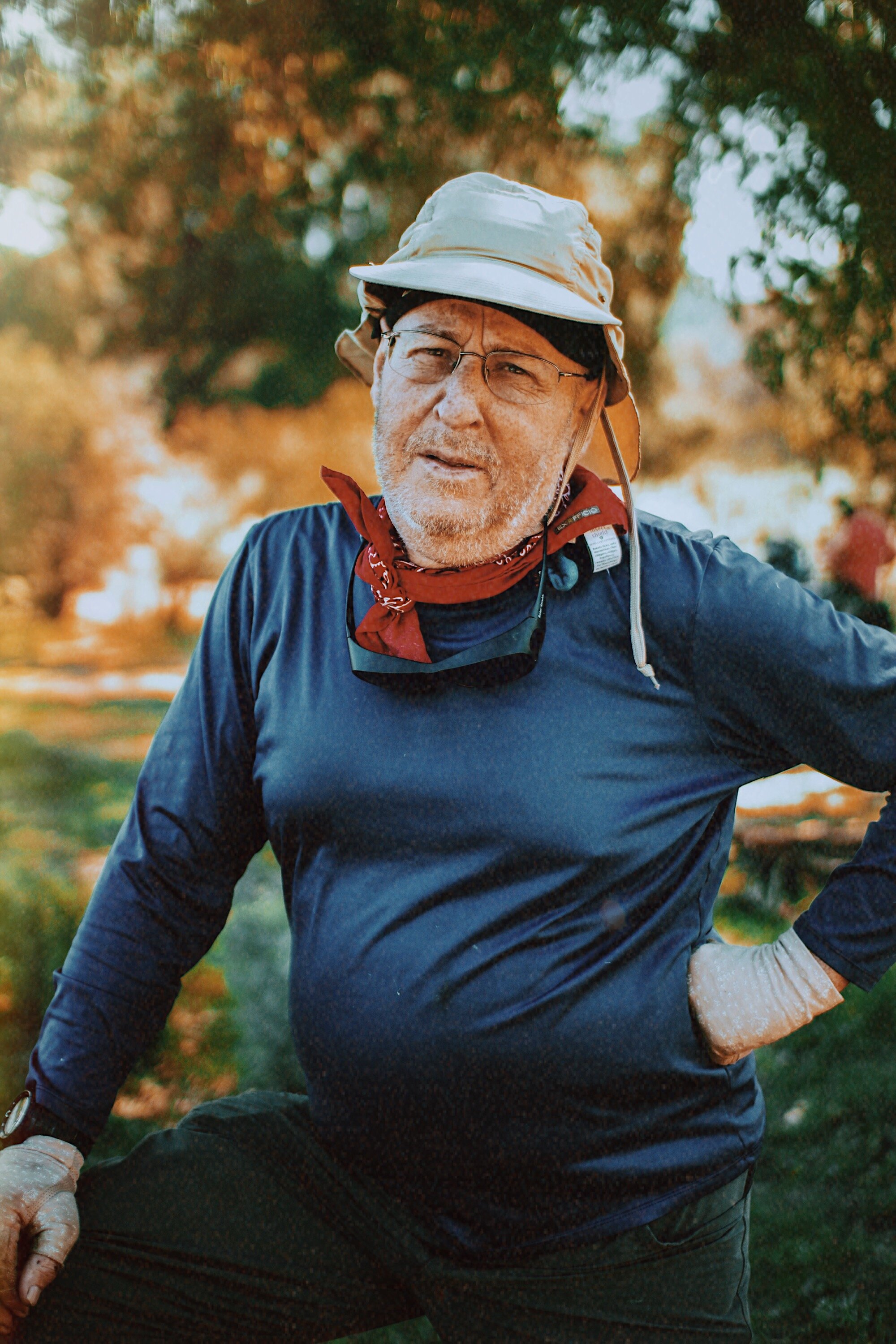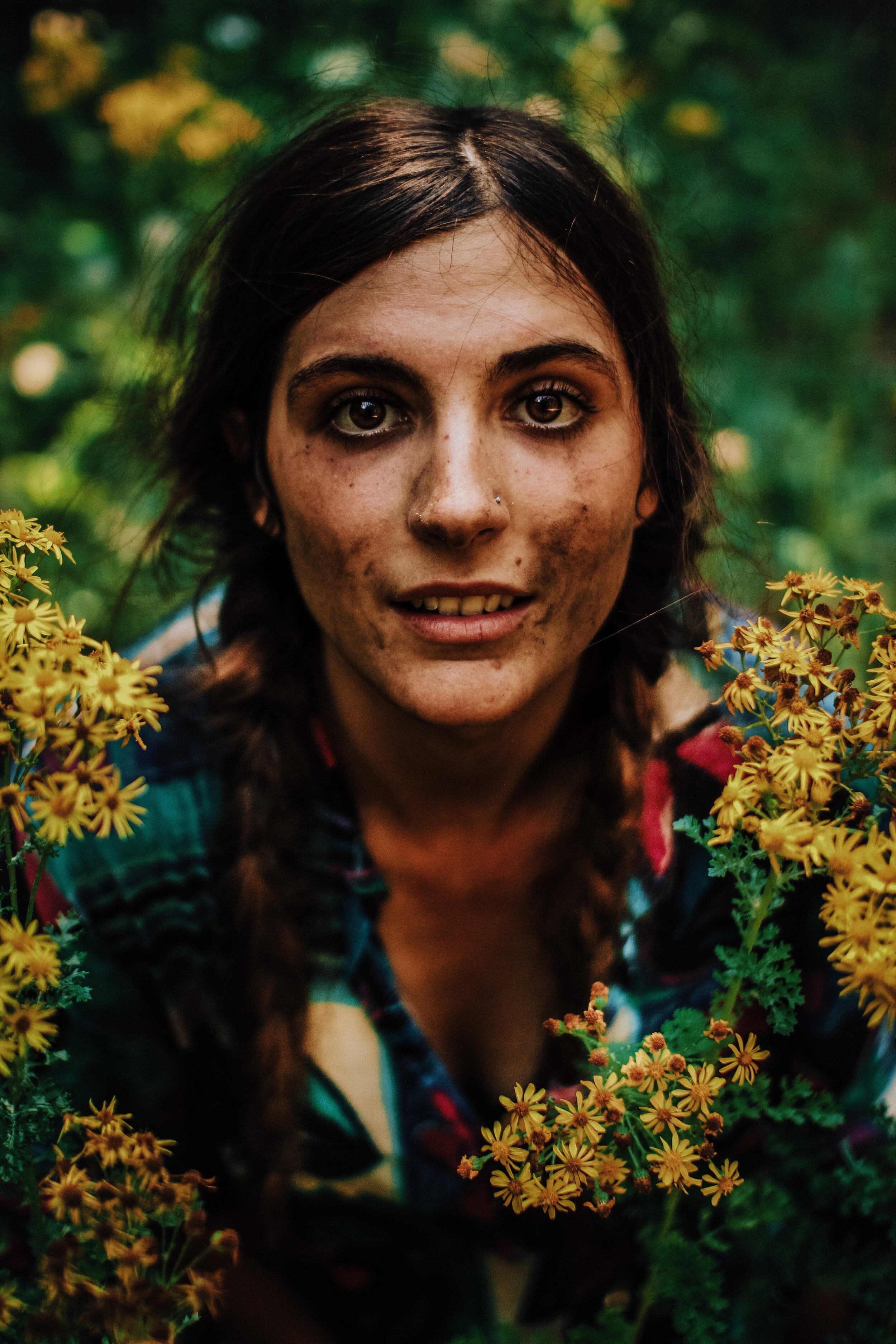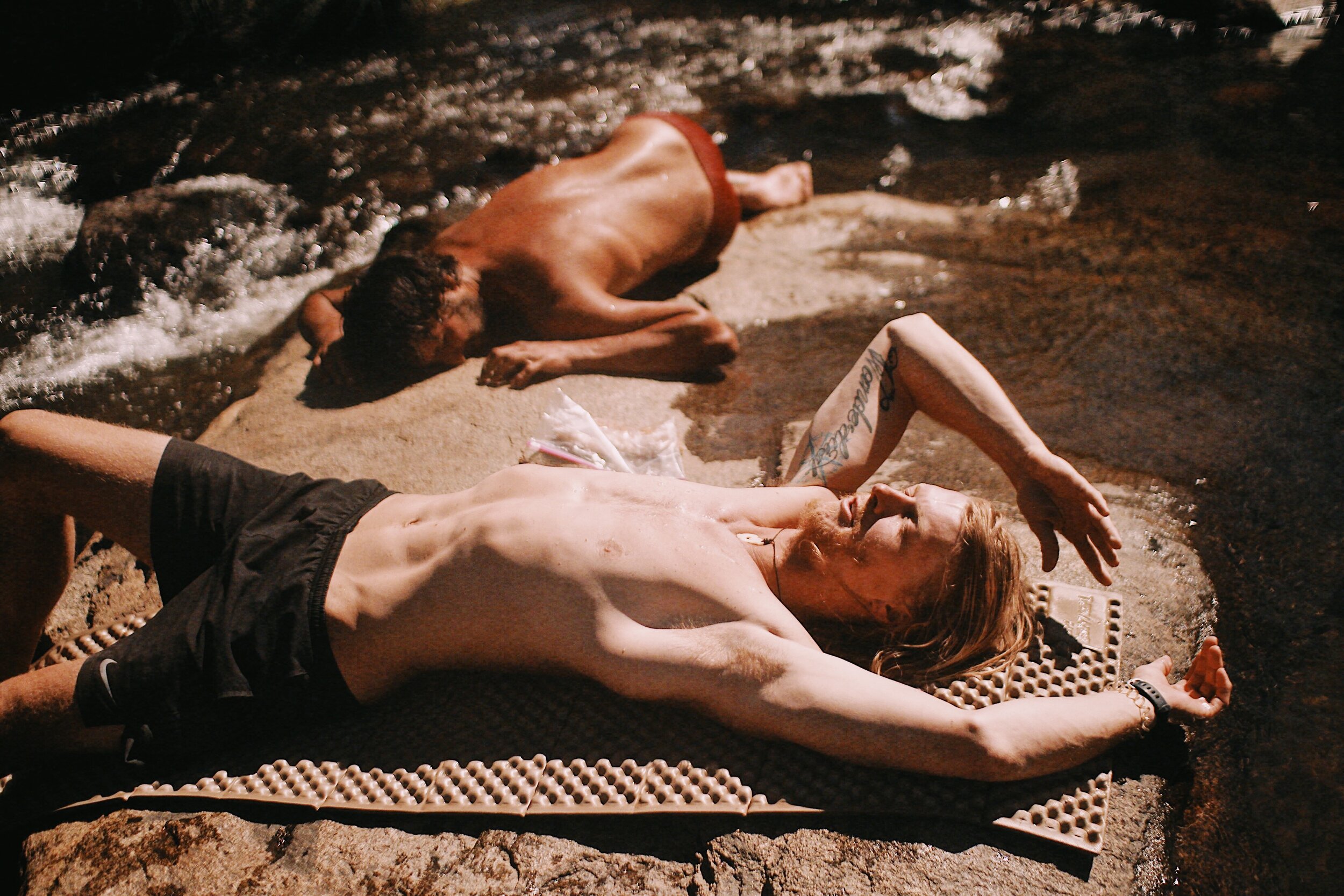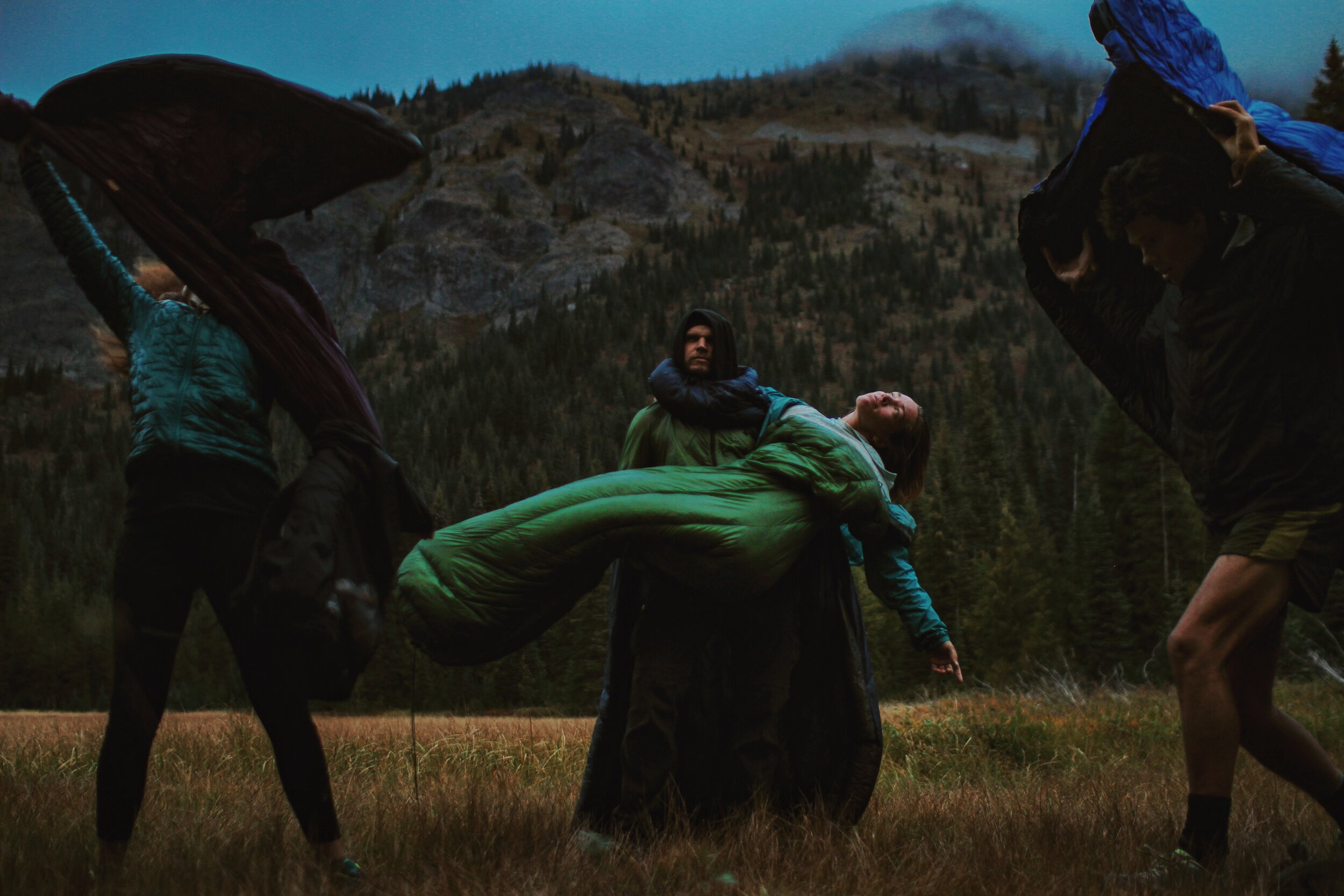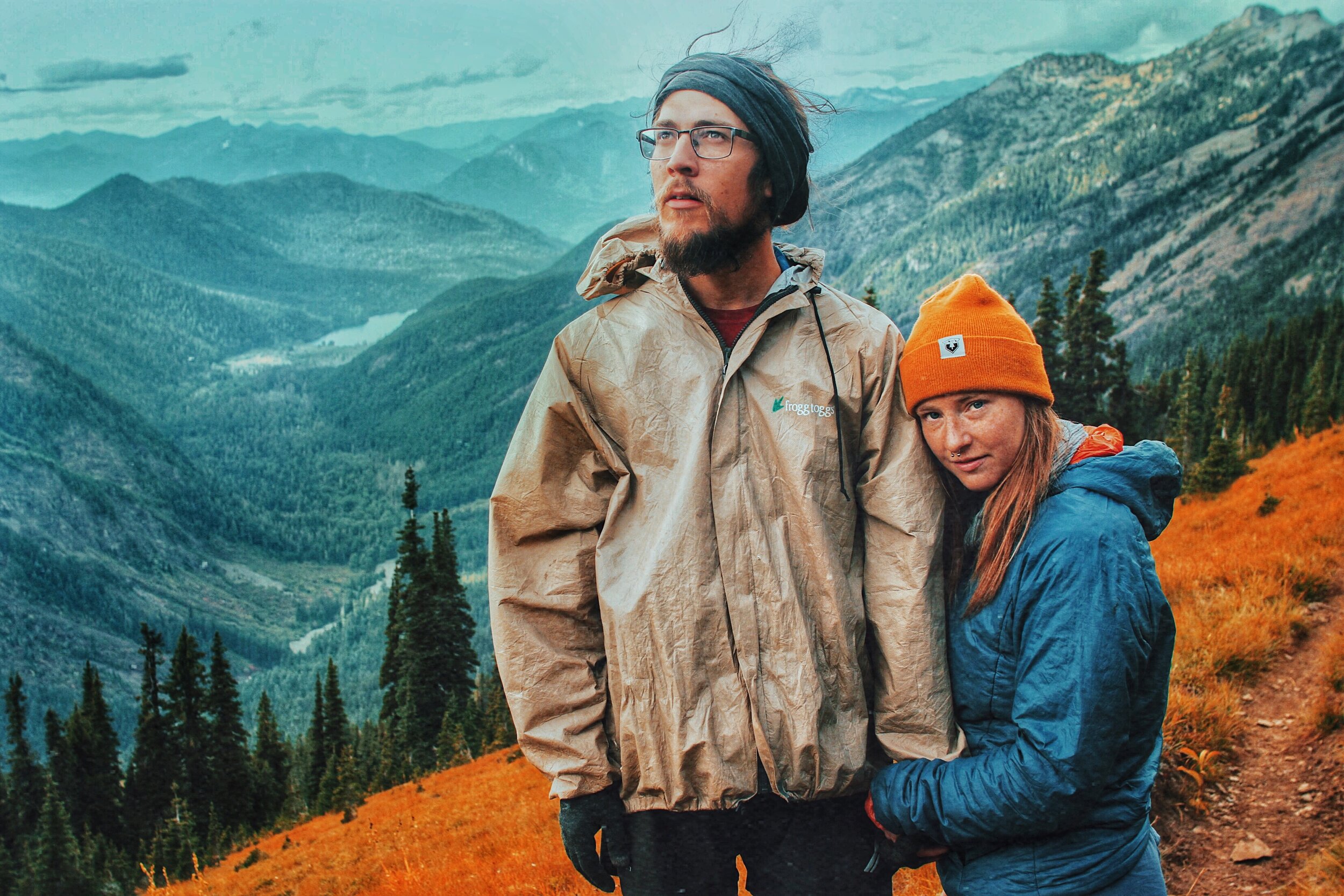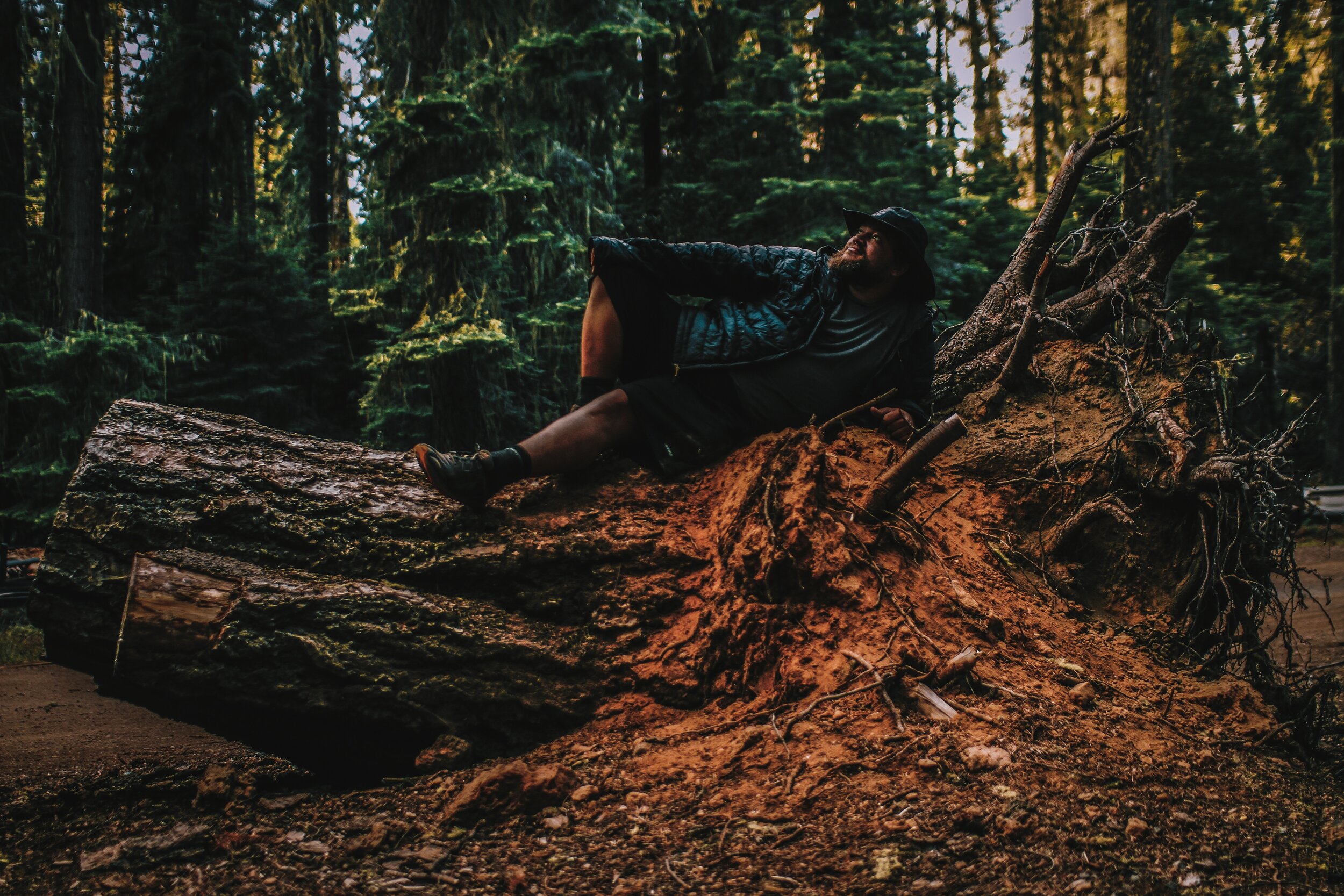Twerk in the Dirt: Hiker Trash Vogue
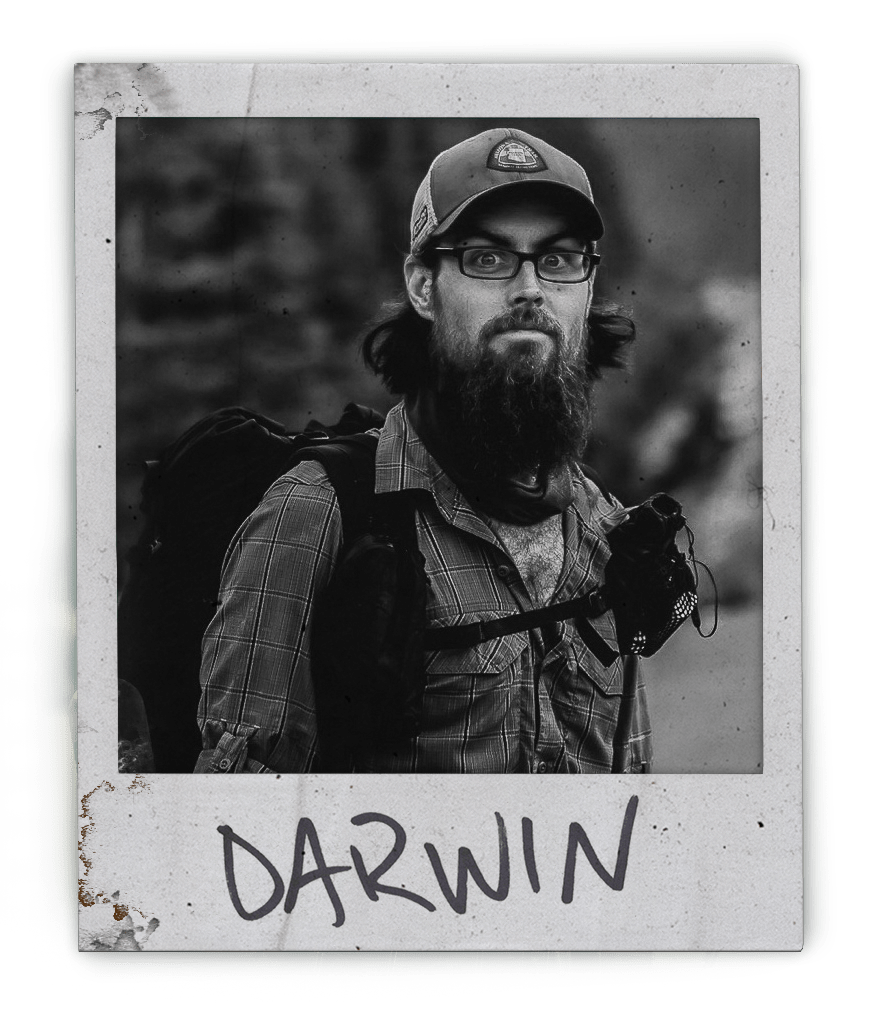
Sincere, Creative, and Outrageous. There are no better three words to describe Tommy Corey, aka “Twerk”. He is the creator of Hiker Trash Vogue, a photo series fusing low-brow fashion and thru-hiking culture. Twerk’s perspective behind the camera showcases the raw, long-distance hiker lifestyle with a satirical tone - like it was meant to be featured on the runway, a runway made of dirt.
What started as a joke amongst Twerk and friends around a campfire, slowly evolved to a semi-serious photo series with a strong social media following. Twerk’s latest photo series features portraits from his 2018 thru-hike of the Pacific Crest Trail (PCT) and various photos of the PCT class of 2019. The cumulation of his work will be made into a 2nd volume of his popular book, Hiker Trash Vogue.
Our contributor, Darwin (darwin onthetrail) had the pleasure of sitting down with Twerk to chat about his origin story into photography, the gear he shoots with on the trail, and advice he gives to future creators.
Darwin: Where did your Trail Name come from? What’s the story on that?
Twerk: Well it’s exactly what you’d think.
In 2017 I attempted my first thru-hike on the Pacific Crest Trail. I carried a little bluetooth speaker and at camp, I’d have all the hikers stand in a circle and we would do stretching before bed. One night, I was posted up against a tree and when it came around to my turn to lead the stretch I said, “hey everyone has to come up to this tree and twerk on it.”
I went upside down and started twerking on the tree.
What I didn’t realize is that I had a rip in the liner of my shorts, which just ripped larger.
D: Haha, Nice!
T: The first trail name they tried to give me was “Ball Sack” … you can guess why.
I didn’t want it, so “Twerk” just kind of stuck.
D: When you went out in 2017, was your intentions to start Hiker Trash Vogue (HTV)?
T: Nooooo actually that hike didn’t really work out. I came back to the trail in ‘18 and started back from the beginning. Not knowing I was going to do HTV. I brought my camera thinking I’ll just take some silly pictures. I wasn’t expecting to start a project or anything. I was just thinking I really wanted to do a thru-hike of the PCT and finish it this time.
D: How did you get started in photography and how long have you been doing portraits? Also, where did your interest in the medium evolve from?
T: I’ve been doing it almost 20 years now. How I got inspired was when I was a kid, in 7th or 8th grade, my friend - her brother was a senior in high school. He was doing a senior project on portrait photography and I remember going to their house and seeing all the portraits he had taken.
I was being a kid, impressionable, and thought, “oh that’s cool, I wanna do that”! So I mentioned to my parents I had an interest in photography and my dad said, “well, I have a camera, you can have it, use it, and if you like it, we will get you a better one later”. He gave me his old Olympus that he shot with when he was a teenager. Once my parents saw I was really serious about it, for Christmas they got me a 35mm Canon. I learned and shot with film for about 7-8 years before I ever held a digital camera.
I love portraiture.
Annie Leibovitz was a huge inspiration for me. She does a lot of work for Vanity Fair and was one of the first photographers for Rolling Stone. I have loved her work since I was a kid.
I think that is where HTV would eventually evolve out of. HTV was integrating my love of Leibovitz, fashion photography, and the things I value now - like the outdoors and challenging yourself.
D: When you started thru-hiking, were you doing any professional or commercial photography? Or was photography just a hobby?
T: I’ve never considered it a hobby. And I’ve never known how to make it profitable. Well, besides shooting weddings. I shot weddings for ten years and did random side-gigs like family pictures. Which, at the time I thought, “wow, I just made 200 bucks in 2 hours!” And now, oh my god I would never do that.
I was also bartending on the side because photography was never profitable enough for me to make a living. Now, I’ve only been working for myself the last year and a half, ever since I left for the trail.
D: Nice. Yeah it’s kind of funny how the trail does that. Points you in the direction of your passion.
T: (Laughs) Yeah It’s kind of funny that I went and dicked around for six months in the woods which allowed me to start working for myself.
D: Pretty wild. As cliche as it is, I feel like the trail always provides.
T: I know it does and I actually don’t think that’s a cliche saying, because it’s the truth.
D: So, what inspired you to start HTV? What’s the story or message you’re trying to tell with the project - especially with the Instagram account and what would later be a coffee table book?
T: To be honest, it started on a drunken Zero Day in Wrightwood, CA. HTV started as a joke. I thought it would be funny to make all these hikers look like they’re models. I just posed people and made them hold their gear.
I posted the photos while in town and it got a real big response. So I thought, “okay that’s cool, maybe I’ll do this in the next town”. We got to Hiker Heaven and I did a full Hiker Heaven photoshoot. Next was Casa de Luna and that’s when the project started getting bigger and bigger. I noticed people were starting to pay attention to my work a little more, maybe because it felt different.
That’s when I had the thought, “this is what I am suppose to do out here, not just hike”. It was nice to have a project that inspired me to keep going during the hike. Honestly, I don't think I would have completed the trail without it. Otherwise, I would have just kept walking and, don’t get me wrong I love thru-hiking, but I think I really needed the photography aspect to push me down the trail everyday.
So what all started on a whim, became a reflection of me; it’s goofy, it’s sometimes outrageous, but it also makes you really look at people. Obviously the views on the trail are amazing, but I think it’s more interesting to get up close and personal with people you meet out there.
At the end of my hike, it’s funny how the meaning and message behind the entire thing shifted. It started as what I thought was a joke and it ended up showing me the beauty that comes with not caring what you look like.
I thought that was amazing.
D: The project seems to carry several themes like Americana, fashion, fine art, and humor - how did HTV stylistically evolve into that? From the first photo in Wrightwood, to the end of your hike, to now?
T: I think it has stayed fairly consistent. It’s definitely a particular style that I don’t want to go too far outside of. The only difference I see in the photos is that in certain sections of the trail I was more emotional and it was getting harder. I could tell my photos were getting better because they were becoming emotionally raw and I was trying hard to pour my heart into the work at that time. I knew HTV was the reason I was going to finish the trail.
The photos I took on the trail feel to me more artistic, more emotional, and very special. This year, it has been fun to go out, do Trail Magic, and take photos of hikers when I want. The only thing that is different this year is that people recognize me a little more. They’ll ask, “Oh are you going to take my picture?”, but it doesn’t work like that. I have to feel inspired. I am not just going to take your picture because you asked me to.
D: How does your background, identity, and personal story relate to your work?
T: So like I told you - I got into photography because I didn’t have a lot of friends growing up and I was made fun of quite a lot. While kids were going to football games and social events, I preferred to be outside or in the park taking pictures of my friends. Being by myself outside was the only place I wasn’t going to get made fun of.
At the time, I was closeted too. I came out when I was 16 years old. Photography was the only way I knew how to express myself. I’m not good at drawing and can’t sing, so in a weird way it was me pouring my self-deprecation as a kid into photography. It’s amazing to see the work now, I literally have photographed 100’s of hikers, a lot of whom I’ve became close with. In a sense it’s weird to look at my work and know these people accept me for exactly who I am. I didn’t have that 20 years ago when I was photographing the same three friends.
D: What are some of the most challenging aspects of your work?
T: The biggest challenge is getting people not to laugh. My favorite part of some of the photos are that everyone looks so serious, yet we’re typically always laughing and having such a good time behind the scenes. That’s what I love about photography - all these photos are just tiny snippets of time and yet there’s stories behind each one.
You get people who are very giggly and people that are very awkward. On my Instagram, I recently posted that everyone says, “I’m too awkward or weird” and I’m like, “yeah everyone is, but I know what I am doing so you need to shut up, let me do what I do best and I’ll prove you wrong”.
D: That’s a good way to go about it. So out of all that - what are some of your favorite photos in the project? Any Interesting stories you want to tell from the photos?
T: That’s a common question. I definitely have ten of my favorite hanging up at home, but I look at my work in sections. The ones from the desert seem really fun and overdramatized. As you get to Northern California and Oregon - when I was starting to feel depleted, morale was low, and I was getting tired. You can tell the work starts to shift to being more emotional and real in that section.
In Washington, I didn’t think I was going to make it. Physically my body was hurting, but I knew I was going to finish. It was hard, because I didn’t want it to be over, I loved it so much. This shows in the work from Washington. It’s very dark and reflects how I was feeling at the time. Washington is definitely my favorite section of work.
As far as favorite stories, there’s a photo I took of my friend Weezer. She's naked in front of this really cool log at Crater Lake. I love that photo. Sometimes it can be annoying when people approach me asking if I can take their picture, but she had a story. She recently got sober and was using the trail to heal from a lot of stuff. She told me she wanted to express that through my art and asked if I could take a photo of her naked. I was like, “Absolutely!”
That photo felt like we were collaborating in a sense. She’s been a close friend ever since.
D: What’s the full story of you getting stung by a wasp? I like how it’s your profile image on everything you use to introduce yourself.
T: Oh my god, I love that photo. The story behind it is - when I was about to cross Bridge of the Gods, it was raining and we still had 20 miles to do that day. I knew I had to hurry. We’re 10ft from Bridge of the Gods and we walked by this bush, that’s when all these wasps started going crazy. I got stung on the eyebrow. I’ve only gotten stung one other time,
…which was three weeks prior at Shelter Cove.
So we crossed the Bridge and everyone is enamored with the moment, yet I am behind everyone yelling because I just got stung. At this point, I didn’t even give a shit about crossing into Washington.
We finally made it 20 miles and the next morning I’m cowboy camping with a buddy. I wake up to ask, “hey does my face look weird”? He turns over and says, “HOLY SHIT”! I got my phone out and looked at my face. I looked like Quasimodo. I got 5 miles in and thought, “I have to take a photo of this”! It’s too funny. So yeah, now I use it for a lot of promotional stuff.
D: I think the photo is a good representation of the roughness and rawness of what the trail can bring. It really shows what it means to be a thru-hiker and how much ass it can suck sometimes.
D: What type of gear do you carry and shoot with on the trail?
T: I just shoot with my Canon 7D and a Sigma 30mm F1.4. That’s all I carry.
D: Any tripods? Or is it all hand-held?
T: Most of it is hand-held, but I did carry a tiny tripod. That was only if I wanted a picture of myself or I was being too lazy. The one of the wasp sting I was holding my camera as far out as I could with my hand.
D: So OE is meant to inspire others to get out, explore, and create. If someone else is getting into photography with a focus on the outdoors, fashion, or art; what advice would you give them?
T: My biggest advice is don't think about it so hard. If I had gone back to the trail knowing I was going to do this photography project, I feel like people would have felt it wasn’t authentic at all. Have an idea of roughly what you want to do, but don’t push it too hard. If you’re creating, create things for yourself. People will see the value in it. I would have done Hiker Trash Vogue regardless if anyone gave a shit about it or not. It made me happy, was a creative outlet, and helped me finish the trail.
Create authentically and don’t worry if you’re going to get a bunch of followers from it.
Do it because you love it
D: You have another project, you want to talk about the podcast?
T: Oh yeah, I started a podcast.
D: Don’t be so modest! Plug it!
T: It’s still early. I have 6 episodes now and a 7th coming out soon. I really wanted to create something that wasn’t just about the trail, but who you are before the trail and what you learned after the fact. I don’t focus on mileage or gear. There’s plenty other podcasters for that information and I’d rather leave it to the experts. I feel the podcast is talking about serious subjects, while laughing. Maybe with more of a focus on diversity within the outdoor industry and do it in a silly way. It’s called The Outdoor Social.
D: It’s a great podcast. What I really like about it is the personal stories people have. It’s very refreshing to hear you chat about things most hikers don’t really talk about. You’re tapping into this other side of the trail - why people are out there, what inspired them, and the personal things they are going through.
T: Thank you. The inspiration came from asking, “what would I want to talk to someone about if we were siting around a fire and being silly”? It’s a little light, because I don’t want people to become depressed after listening to an episode.
D: Right on, so the second book is coming out soon. Is it any different than the first Hiker Trash Vogue?
T: Yeah! There are a lot of new stories and of course, new hikers. Second Chance is going to be in there this year! It's still a big book of stories and photos, with the design of a mock fashion magazine.
D: Are you planning on taking Hiker Trash Vogue to any other trails or do you want to stay focused on the PCT?
T: I kind of feel like I have to hike other trails now. Though I really want to do a south-bound on the PCT next year. I definitely want to thru-hike the CDT and AT eventually. God-willing.
D: I know there’s a pre-sale going on now, but when the book is finished where can people find it?
T: Once it’s released, people can buy it on my site or amazon. Right now, it’s just on pre-sale and it’s not going to be released until around November.
D: Anything else we should know about you or the work? Anything else you want to plug?
T: No not really, that’s about it…



